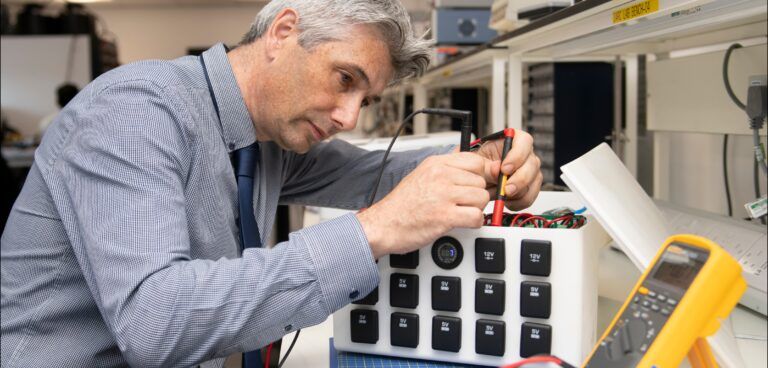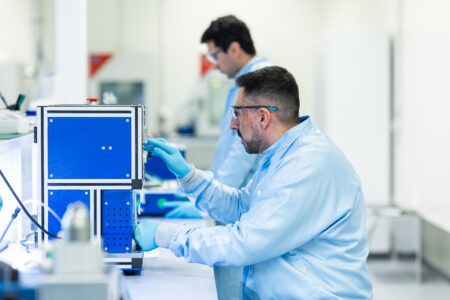The University of Warwick, in the UK, has developed a process to recycle and repurpose used electric vehicle batteries to form energy storage systems that can provide power to developing and isolated parts of the world.
As electric vehicle numbers are continuing to grow, the issue of battery end-of-life is a growing concern. Instead of seeing used batteries end up in landfill, there are a number of initiatives to put them to use, including that from the University of Warwick.
Researchers have converted the used EV batteries to create small energy storage systems (ESS) for off-grid locations, with each containing approximately 2kWh of energy capacity, will be able to power a small shop, a farm holding, or multiple residential homes.
“When an electric vehicle’s battery reaches the end of its useful life it is by no means massively depleted. It has simply reached the end of its useful life in a vehicle. It is generally accepted that an EV battery has reached end of life when its capacity drops to 80% of a fresh battery. While this is no longer enough to satisfy drivers, it remains immensely useful for anyone who seeks to use the battery in a static situation,” said WMG’s Professor James Marco, who was lead researcher on the project.
However, it is not simply a case of plugging the depleted batteries into a storage system and turning it on. There are several challenges that need to be overcome before they can be used reliably, sustainably, and cheaply. These include protecting the lithium-ion cells from over-charge and discharge; making the ESS compatible with a variety of battery makes; and keeping the whole system cheap to implement, easy to use and maintain.
The WMG team, at the University of Warwick, set about overcoming these challenges with the help of the WMG HVM Catapult and Jaguar Land Rover who supplied batteries and components from the Jaguar I-PACE, their first all-electric performance SUV. The team designed a new Battery Management System (BMS) and packaging that allowed them to create a working and easily portable prototype ESS.
The result is an interchangeable second-life battery system with 2kWh of capacity, multiple 12V DC sockets and 5V USB charge ports, which can be recharged by reclaimed laptop chargers.
“This is a great result that not only provides a highly efficient repurposing solution for automotive batteries but which could also change lives in remote communities. We are now looking for support to allow these new units to be further developed and tested in remote or off grid locations,” said Professor Marco.





